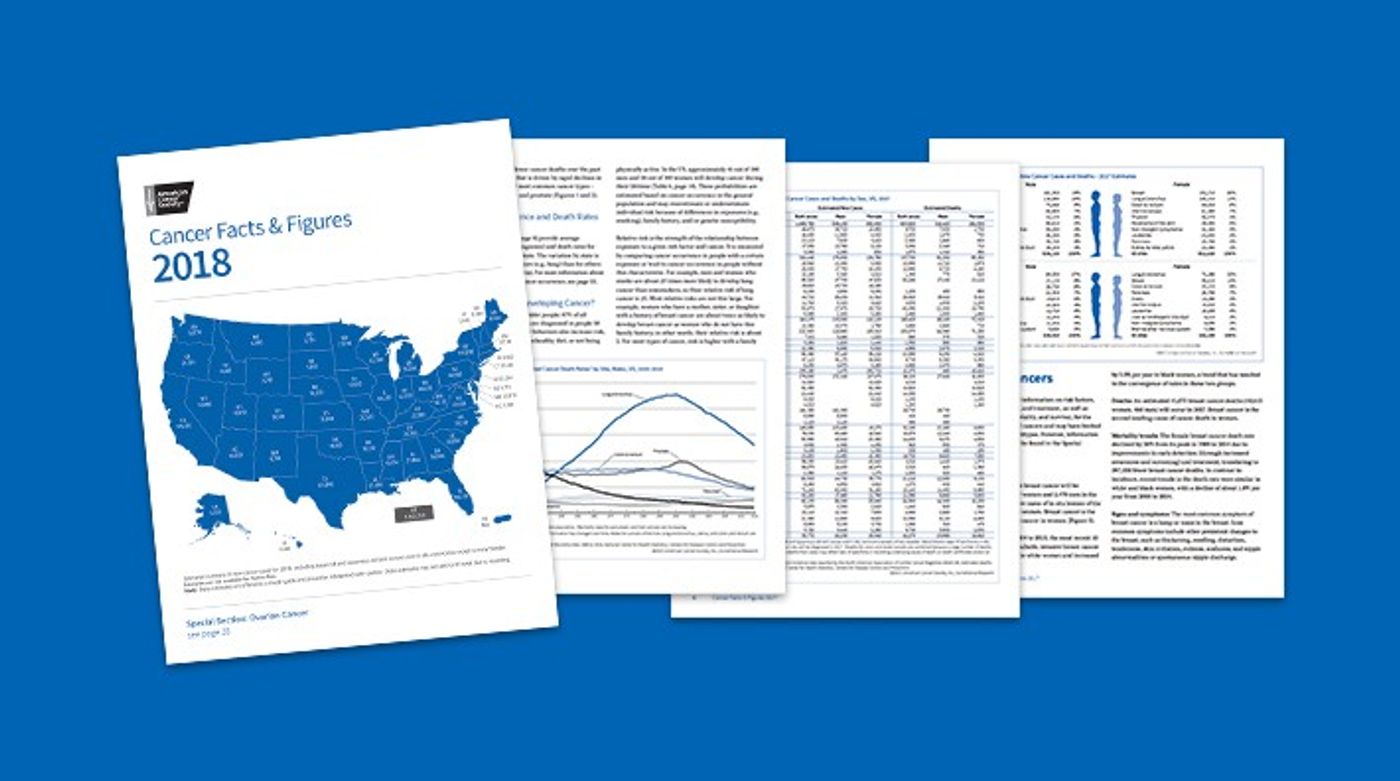Cancer Deaths Continue Decline, Racial Imbalance Persists
The American Cancer Society (ACS) released annual statistics reporting showing the mortality rates for cancer in the U.S. are still in decline. Since a peak in 1991, the rate for men and women combined has fallen 26 percent -- this means that 2.4 million lives have been saved. From 2014 to 2015, the mortality rate dropped 1.7 percent. A racial imbalance continues to be evident in regard to lower health care quality and higher cancer risk for African-Americans, Hispanics and Latinos, and individuals in poverty.
The most recent decade of data shows new diagnoses falling by 2 percent for men and staying level for women. The decrease in deaths is attributed largely to ongoing reductions in cigarette smoking and improvements in early detection and treatment. Smoking cessation is seen as a primary factor by Chief Medical Officer of ACS, Dr. Otis W. Brawley, but he adds, “Strikingly though, tobacco remains by far the leading cause of cancer deaths today, responsible for nearly 3 in 10 cancer deaths.”
Major Cancer Death Rates Decline
- From 1990 to 2015, lung cancer death rates declined 45 percent for men and from 2002 to 2015, 19 percent among women. ACS reports that historically, women started smoking en masse years later than men and have been slower to quit.
- Breast cancer deaths for women declined 39 percent between 1989 and 2015.
- Prostate cancer deaths dropped 52 percent between 1993 and 2015 for men.
- Deaths from colorectal fell 52 percent between 1970 and 2015 for men and women. But, between 2006 and 2015, adults under 55 experienced a 1 percent annual increase in related deaths.
Childhood cancer rates rose by 0.6 percent annually since 1975. But, the 5-year survival rate rose from 58 percent for youth diagnosed between 1975 and 1977 to 83 percent for those who received a cancer diagnosis between 2007 and 2013.
Disparities in Care and Mortality Rates
Rates for cancer cases and deaths are highest for African-Americans and lowest for Asian-Americans. In 2015, African-A
ACS attributes this ongoing disparity to socioeconomic factors. In 2016, 22 percent of African-Americans and 19 percent of Hispanics and Latinos were in poverty, while the rate was 9 percent for Caucasians and 10 percent for Asians. Also, 11 percent of African-Americans and 16 percent of Hispanics and Latinos were uninsured, while 6 percent of Caucasians and 8 percent of Asians went without insurance. ACS reports that tobacco and fast food companies target people in poverty, who typically have less access to fresh food and opportunities for physical activity in their communities. These factors also increase cancer risk. Furthermore, “Even when other factors are equal, studies show that racial and ethnic minorities tend to receive lower-quality health care than whites,” ACS states.
Women and people with disabilities have been shown to receive lower-quality care in some studies as well. The 2010 National Healthcare Quality and Disparities Report from the U.S. Department of Health and Humans Services found inequities in the quality of health care afforded to women, stating women’s “health care quality and access are suboptimal, especially for minority and low-income groups.” Also, studies from the U.S. and UK in 2017 found people with disabilities were likely to have reduced access to health care and poorer health.










